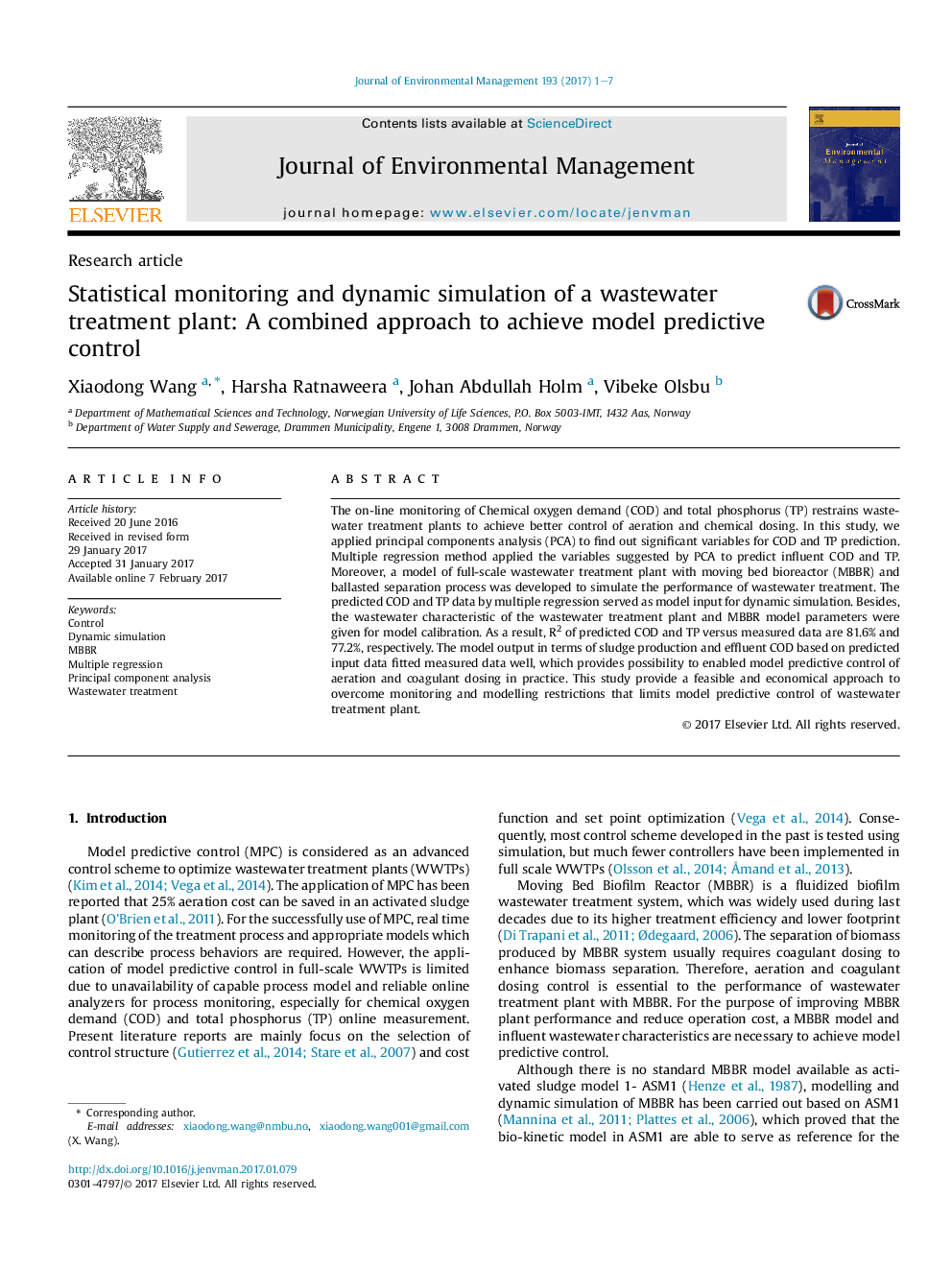| Article ID | Journal | Published Year | Pages | File Type |
|---|---|---|---|---|
| 5116804 | Journal of Environmental Management | 2017 | 7 Pages |
â¢Principal component analysis figured out most significant variables for prediction.â¢Multiple regression enabled online measurement of COD and TP economically.â¢A full-scale WWTP model with MBBR and ballasted separation process was developed.â¢Simulation using predicted data as model input enabled model predictive control.
The on-line monitoring of Chemical oxygen demand (COD) and total phosphorus (TP) restrains wastewater treatment plants to achieve better control of aeration and chemical dosing. In this study, we applied principal components analysis (PCA) to find out significant variables for COD and TP prediction. Multiple regression method applied the variables suggested by PCA to predict influent COD and TP. Moreover, a model of full-scale wastewater treatment plant with moving bed bioreactor (MBBR) and ballasted separation process was developed to simulate the performance of wastewater treatment. The predicted COD and TP data by multiple regression served as model input for dynamic simulation. Besides, the wastewater characteristic of the wastewater treatment plant and MBBR model parameters were given for model calibration. As a result, R2 of predicted COD and TP versus measured data are 81.6% and 77.2%, respectively. The model output in terms of sludge production and effluent COD based on predicted input data fitted measured data well, which provides possibility to enabled model predictive control of aeration and coagulant dosing in practice. This study provide a feasible and economical approach to overcome monitoring and modelling restrictions that limits model predictive control of wastewater treatment plant.
